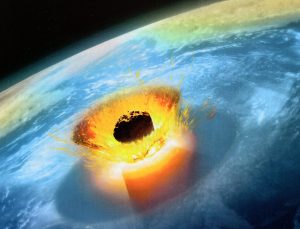The National Geographic Society over the decades has consistently held closely to the secular perspective in its treatments of history and science. This is seen in all articles in National Geographic publications by its devotion to deep time and macroevolution. Articles on dinosaurs in particular rely heavily on the telling of stories that appeal to our human appetites for mystery and adventure. Great effort is placed on splendid (fictional) paintings with imaginative details of things discussed in the dinosaur stories. These starting points in the Nat Geo articles mean that truth can be, and often is, sacrificed. In my opinion, most National Geographic stories about dinosaurs are aimed at the readership level of the fourteen-year-old child. Unfortunately, most children of that age have not yet learned the importance of critical thinking and tend to believe everything they read. Nat Geo knows this fact, and so fantastic dinosaur stories of this type are the usual result.
In 2024 Nat Geo published a book with the title, Dinosaurs—A New Look at the Prehistoric Icons.* I am writing this article as the last in a series of five on various parts of this Nat Geo book. My article #5 will cover several articles in the book purporting to explain the extinction of the dinosaurs with a time stamp of 66 million years ago.
In all secular dinosaur stories, the assumption of deep time is foremost. What is not ever explained is that the deep time is a foundational assumption and not a historical or scientific fact. The geological timeline was developed based on assumed jumps of one kind of life to the next evolved kind. Various guesses about how long these jumps might have taken are then added up to get the millions of years. Of course, no one has ever witnessed any of these assumed evolutionary jumps either in the present or in the fossils in the rock record. The ages of sedimentary rocks are then determined by the artificial predesigned order of the fossils in the geological timeline. This timeline and the principle of uniformitarianism (“the present is the key to the past”) are taken totally on faith by evolutionists. It is not science!
So, an underlying presupposition of secular paleontology is that the dinosaurs died out about 65 million years ago. I emphasize that this is not a scientific fact but a secular presupposition. Over the years various secular stories were proposed to explain this event. The uniformitarian basis for their timeline did have to be modified to allow for a one-time catastrophe. Some of the early catastrophes proposed were that the dinosaurs put too much energy into growing big and spiky and this made them incapable of adapting to climate changes. Other ideas were that slipped discs, out-of-control sex-drives, disease, cataracts, and dino stupidity caused their demise. There were more theories, some that were absolutely absurd. According to the articles in the Nat Geo Dinosaurs book the current theories for dino demise boil down to two most popular: the Chicxulub asteroid impact and the Indian Deccan lava flows.
Author Victoria Jaggard wrote in her Nat Geo Dinosaurs article (page 80), “Why Did the Dinosaurs Go Extinct”: “Iridium is relatively rare in Earth’s crust but is more abundant in stony meteorites, which led [the scientists Luis and Walter] Alvarez to conclude that the mass extinction was caused by an extraterrestrial object. The theory gained even more steam when scientists were able to link the extinction event to a huge impact crater along the coast of Mexico’s Yucatan Peninsula. At about 93 miles wide, the Chicxulub crater seems to be the right size and age to account for the dino die-off.”
Map Showing Location of Proposed Dinosaur-Killing Asteroid Impact.
Artistic Rendition of Chicxulub Asteroid Impact.
Jaggard writes later in her article (page 82): “However, other scientists have maintained that the evidence for a massive meteor impact event is inconclusive, and the more likely culprit may be the Earth itself. Ancient lava flows in India known as the Deccan Traps also seem to match nicely in time with the end of the Cretaceous, with massive outpourings of lava spewing forth between 60 and 65 million years ago. Such an eruptive event would have likely choked the skies with carbon dioxide and other gases that would have dramatically changed Earth’s climate.”
With a biblical worldview the global Flood described in the book of Genesis makes much more sense of the evidence than any of the secular stories. The biggest weaknesses to the two most popular secular stores in my opinion are that they do not explain why other animals similar to the dinosaurs were not affected by the secular mass-extinction, and how did the dinosaurs get buried in water laden sediments all around the surface of the earth in giant graveyards? How did other reptiles and lizards survive the event. An asteroid impact or large lava flows do not explain fossil transportation and mass burials!
Artistic Rendition of Asteroid Mass Killing of Triceratops Dinosaurs-with no Burial Explanation.
If the secular scientists could accept the loads of biblical geological and paleontological evidence that indicates that fossils can be no older than the 4,500 years since the global Flood at the time of Noah, there would be no controversy about what happened to most of the dinosaurs. Unfortunately, it is highly unlikely this will happen any time soon.
J.D. Mitchell
The fear of the LORD is the beginning of knowledge, but fools despise wisdom and instruction. (Proverbs 1:7 NIV)
*Dinosaurs—A New Look at the Prehistoric Icons, National Geographic Partners, LLC, Meredith Operations Corporation, New York, NY publisher, 2024.
Related CEC articles that you can find on this website:






